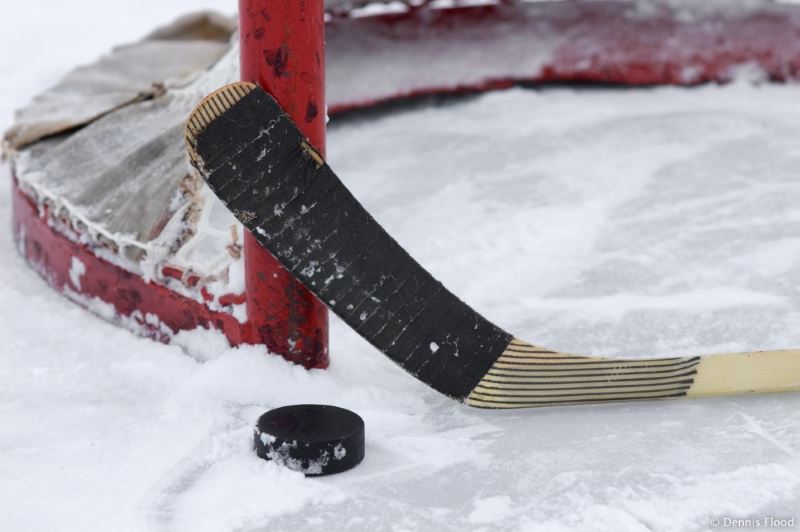Hips and Knees
Your Hips: The ‘Core’ of the Problem?
I think most of us by now have heard about the importance of strengthening your ‘core’. But did you know that the most important part of your core for preventing hip, knee, and ankle injuries are your hip muscles? Your hip muscles or ‘glutes’ are the largest group of muscles in your lower body and are a part of your core that are often much weaker than they should be.
So what exactly are the hip muscles responsible for? Strong hip muscles keep your spine, pelvis, knees and ankles in alignment. If your glute muscles aren’t strong enough your hips rotate and drop, your knees move inward and your feet flatten (pronation). All of these motions create more strain on the joints, ligaments and tendons of your lower body. This excessive strain often leads to injury and persistent pain. Achilles tendinosis, patellofemoral knee pain, iliotibial band (ITB) syndrome, and piriformis syndrome are all common injuries linked to weak hip muscles. Research is also showing that hip weakness is a major risk factor for non-contact ACL (knee ligament) injuries.
So why do our hip muscles become weak in the first place and what can we do about it? The latest research done by Dr. Powers who is a physiotherapist in Los Angeles, shows that our brains have only a very small area dedicated to controlling the hip muscles. It is unclear why this is the case but it may explain why the majority of us don’t naturally use our hip muscles during activities such as: running, walking and hiking. The good news is that the same research shows that exercise can change the way our brains work.
In the study, patients that took part in specific hip strengthening exercises, actually showed changes in brain function. The areas on the brain controlling the hip muscles became larger after only a week of exercise! This is important because the larger the area of your brain dedicated to a certain muscle group is, the easier it is to ‘turn on’ and strengthen that muscle. Keep in mind though, these strengthening exercises need to be done for a minimum of 3 months in order to get significant strength improvements in the muscle.
So if you suffer from ongoing hip, knee or ankle pain, strengthening your hips may be the key to getting over your injury problems. Visit your local physiotherapist and ask for an assessment on your hip strength. If your muscles are weak your physiotherapist will give you the proper home strengthening exercises to address the weakness. Through these exercises you can change your brain to help change your pain.
Graham Gillies is a registered Physiotherapist at Sun City Physiotherapy Winfield and is a fellow of the Canadian Academy of Manipulative Therapy and a certified Gunn IMS and acupuncture practitioner.
Sports
On February 2, the groundhog told us that spring will arrive soon. But don’t fear – the sledding days are not yet over. If you are looking to maximize your snowmobiling adventures or to try the activity for the first time before the snow disappears, then this is for you.
Like any other activity, it is important to understand the risks and how to prevent injury. In this case I’m not talking about injuries from accidents, although that is still very important to take precautions to avoid. My focus is instead on the aches and pains you may experience throughout your body.
Snowmobiles have come a long way from the original 20 ton machine that was first designed for log hauling, with most modern machines weighing over 500 lbs and able to reach speeds of 110 mph (Heisler 2010). With prolonged time on the machine you are exposed to awkward positions for your upper body, long periods of sitting with a forward bent posture, and vibration stresses. Not to mention the heavy lifting, pulling, and pushing when you need to get out of a jam. Common aches and pains from riding are the low back, neck, shoulder and the occurrence of white-finger syndrome (Heisler 2010).
I’m not suggesting you quit your sport! There are certain factors that can be modified to prevent you from injury, and to keep you more comfortable.
A factor to the aches and strains is the ergonomics of a snowmobile. One of the most important parts to adjust is the steering bar (Rehn et al. 2005). Ideally it should be close enough to your body and have the grips oriented in a way so that your wrists aren’t bent, your shoulders aren’t hiked up and you do not have to reach so far forward. This will put you in a more comfortable posture for your upper limbs and your lower back, as well as lowering the grip force you need to use. Specific positions are to have your wrists neutral, elbows bent 60-70 degrees and if you have a seat back, for it to be tilted back 45 degrees (Heisler 2010). Grips should ideally be about 1.5” in diameter to lessen the grip strength required to steer (Heisler 2010). When looking at buying a snowmobile, also consider its seat suspension. Whole-body vibration, which will occur even on groomed trails, puts the discs in your back at risk for injury (Bovenzi and Hulshof 1999).
There are other factors to consider beyond just the ergonomics of your sled. Here are things you can do to prevent injuries:
Avoid sitting too long in poor posture: When you sit, you lose the normal curve in your low back. This is made worse by bending forward. The posture in combination with the machine’s vibration puts the discs at risk of injury. When possible, alter how you sit so that you back isn’t arched so much.
Wear appropriately warm mitts: Vibration of the upper limb, along with cold exposure, can contribute to the occurrence of “white-finger syndrome” which increases the chances of frostbite. It will also affect your ability to grip properly (Heisler 2010). To minimize this risk, stay warm!
Keep strong: Think of sledding as you would another sport – one that requires strength and endurance. Keep your body fit, and flexible, during the week to prepare you for the weekend adventures.
Listen to your body: If you’re getting fatigued, it’s time for a break. That is when you have a greater chance of adopting poor postures, or hurting yourself with the sudden jolts and turns.
And of course, listen to your body if you’re experiencing pain. Delayed onset of muscle soreness, DOMS, has been reported to last about 1-3 days after snowmobiling (Heisler 2010), but if it extends beyond that, or if you’re finding you’re getting weak (a loss of grip strength is commonly reported) – seek out care from a health professional.
Enjoy the rest of the sledding season, have fun, and stay injury-free!
Sports
Running is a popular activity that can help maintain or improve your cardiovascular fitness and in some cases help you lose weight. There are many different reasons to run but often there is a goal set that may include 5Km, 10Km, half marathon, or full marathon.
When training for longer runs including 10km, half and full marathons it is important to remember that the training schedule should take place over long periods of time to allow your muscles and joints to accommodate for the increased strain that will be placed on them during the long run. As a physiotherapist, I treat many runners with all sorts of injuries. Some of the most common injuries include plantar fasciitis, achilles tendonitis, muscle strains, and Iliotibial band friction syndrome (IT band syndrome).
IT band syndrome is a repetitive stress injury that occurs when the iliotibial band glides over the lateral femoral condyle on the outside part of the knee. The iliotibial band is the thick band that runs from the outside of the hip down to the outside of the knee. It is a common injury for long distance runners (20-40 miles/week) but is not limited to only long distance runners. Running on various terrains can increase the risk of developing this condition. Up and down hills, graded slopes, and cambered roads have all been shown to increase the risk. This syndrome may also be found in other athletes or weekend warriors such as cyclists, weight lifters, and participants in jumping sports.
With IT band syndrome there is rarely a history of trauma. Patients will often complain of knee pain that may be difficult to localize and usually increases with repetitive motions like running. The symptoms usually get worse with changes in training surfaces, increasing mileage, or training on crowned roads.
Studies have found that long distance runners with IT band syndrome have weaker hip abductor and glut muscles on the involved leg compared to the uninvolved leg. The hip abductor muscles are located on the outside part of the hip and help prevent the leg from moving towards the centre of the body. It is also noted that fatigued runners are more prone to having their hip adduct (move towards the centre) and internally rotate (leg turns inwards) which causes more friction on the iliotibial band and therefore the symptoms get worse.
The management of IT band syndrome usually includes: 1) activity modification (usually decreasing mileage). 2) New running shoes. Shoes should be replaced about every 500km. 3) Heat or ice. 4) Stretching the IT band. 5) Strengthening the hip abductors and glut muscles.
If you are interested in pursuing long distance running you should: 1) follow a certified training schedule. 2) Make sure the shoes you are wearing are the right shoes for you. 3) Increase your mileage slowly to allow your body to accommodate for the increased strain. 4) Hit the gym – muscle weakness can cause problems down the road. 5) Go in for an assessment with a health care professional if you start to experience aches and pains that aren’t going away.



